
Live Commerce: The Latest Multi-Billion E-Commerce Trend
Last update: 20 February 2024 at 01:39 pm
We know it: marketing and e-commerce are transforming rapidly. It is clear that the age of traditional brick-and-mortar stores is over. For a few months now, a new trend has been making the rounds: live commerce.
And I’m not talking about a small trend. In this article on Shopatainment, Connie Chan explains that online shopping evolved rapidly among Chinese consumers. Likewise, it gave way to live commerce which already represents a $137 billion-dollar-a-year industry in China.
More importantly, this movement is coming to Europe. Like it or not, any company that does e-commerce is going to have to address the issue of live video shopping. For this purpose, we recorded a podcast with Smaranda Molle, Content & Performance Strategist at Hilarious to talk about this new e-commerce trend.
This article is an English-translated version of our podcast discussion (originally in French), available on YouTube and Spotify. Continue reading to learn about the latest on this innovative sales channel to engage customers and drive sales.
What is Live Commerce?
In the podcast, Smaranda explains that:
“Live commerce is a Teleshopping 2.0”.
To get into context, it is the new version of home shopping networks. However, instead of buying through television, online shoppers buy from live events hosted on social media platforms such as Facebook live or Instagram live.
As online shoppers, they can discover these products in real-time and make instant purchasing directly on the live streams.
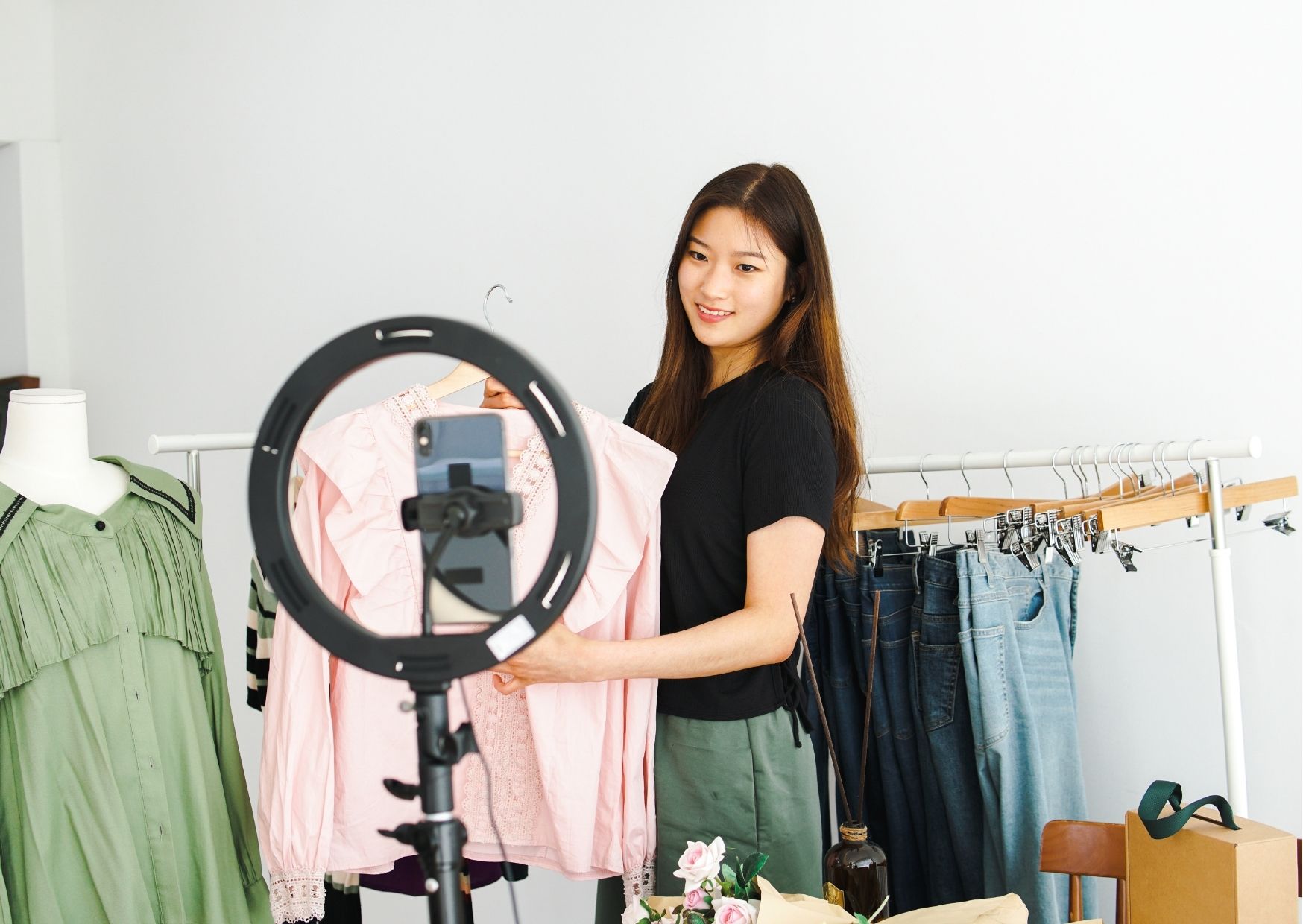
Likewise, the benefits of live commerce are:
- Enhance the customer experience
- Have real-time conversations with online shoppers
- Show what the products look like
- Explain how to use the products
- Include interactive elements
In the same manner, traditional e-commerce has the flaw of low conversation rates. Yet, the live commerce format is similar to an in-person experience but via live streaming.
Introducing this factor of human interaction by live video streaming results in higher engagement and thus more chances to close a sale compared to traditional e-commerce.
Where Did Live Commerce Trend Start?
As I mentioned at the beginning of this article, livestream video shopping initiated sales in China. That’s where this trend has exploded into $137 billion-a-year of total Chinese sales.
In the podcast, Smaranda explains that this is mainly due to the functionality and the structure of the social networks used there. To put it simply, social networks like Douyin have been designed to directly integrate the possibility to make purchases.
Furthermore, this is true for Chinese E-commerce platforms too. To mention an example, TMall Global hosted a live shopping session with Viya (famous Chinese live-streamer) and Kim Kardashian. In just a few minutes, all of KKW’s perfumes were sold out.
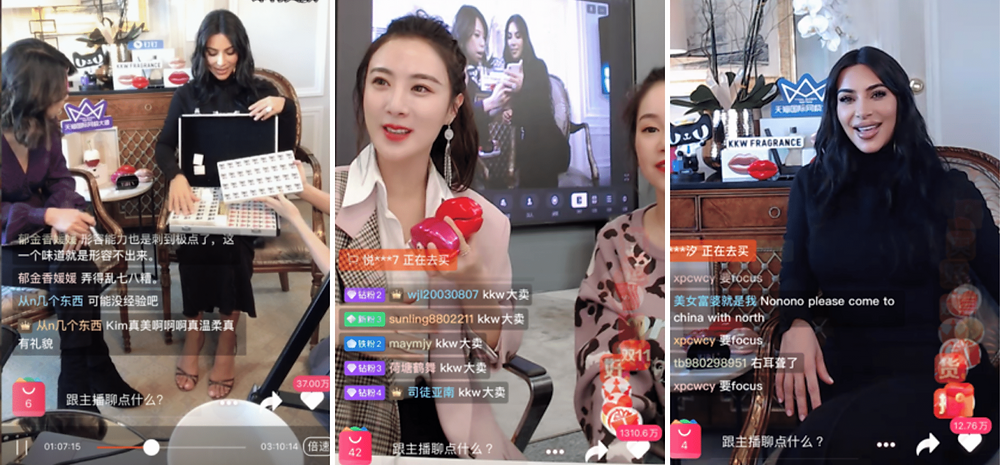
By connecting with mobile payment tools like WeChat Pay, users can easily shop without leaving the social network. The whole point of Douyin is to keep its users on the platform as long as possible, without them having to leave the mobile app.
Today, this live commerce trend is starting to arrive in the Western world.
Is Live Commerce a Must for All Industries?
The question is whether all brands and industries should be concerned with live shopping. Can the live commerce channel be interesting for all types of products?
I asked Smaranda this question. According to her:
No matter what your industry is, live shopping events can have the potential to generate revenue for your business. It’s definitely a trend that is revolutionizing online shopping.
Right now, it’s mostly used in the retail industry. To be more specific, mainly the fashion and makeup industries have incorporated live stream shopping for online users. This can be explained by the fact that it’s one of the sectors with the most influencers as well as a fairly forward-thinking audience.
Yet for the short-coming future, we can imagine that tech influencers will also start doing live videos. For example, to present smartphones, drones, smart watches, etc. This is the same for other specialties such as influencers in fitness, food, travel, etc.
In short, regardless of the industry you are in, live commerce can be an interesting channel to add to your online shopping platforms mix.
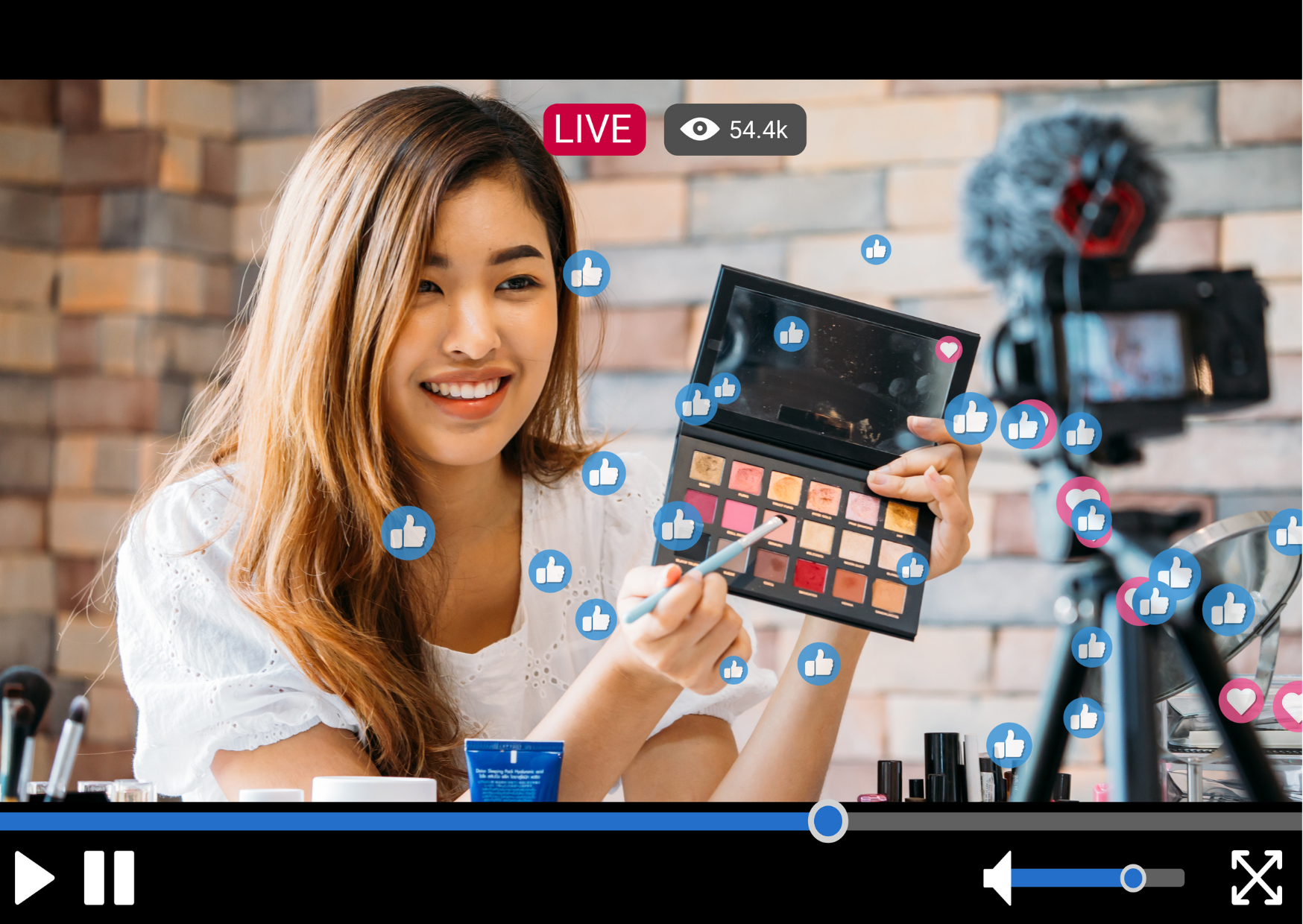
Live Commerce Formats
The whole advantage of this marketing channel is that it uses video, which gives a lot of possibilities. Thanks to video, you can present your product in creative ways.
You can:
- Show the manufacturing process of your products.
- Make an unboxing to show how your products look like when delivered.
- Make a tutorial to show the different uses of your products.
- And so on.
Video content offers many ways to capture the attention of your audience and promote better your products.
How to organize a Live Commerce Event?
Now that we know the basics of live commerce, the next step is to learn: how to organize one?
Smaranda presents a 5-step guide, which I summarize here:
1. Choose Your Platform
The first step is to choose the platform on which you will broadcast your live shopping events. Here, you have several options:
- TikTok
- Your own website
In the podcast, we explain that if your website doesn’t generate a huge amount of traffic, it’s better to host your live stream on a network like TikTok or Instagram (doubled on Facebook).
Indeed, unless you are a well-known brand like Asos or Shein, whose websites attract a lot of traffic, you will need to be on a social network to attract a decent amount of audience to your live events.
For reference, Shein generates around 18 million visits per month on its US website:
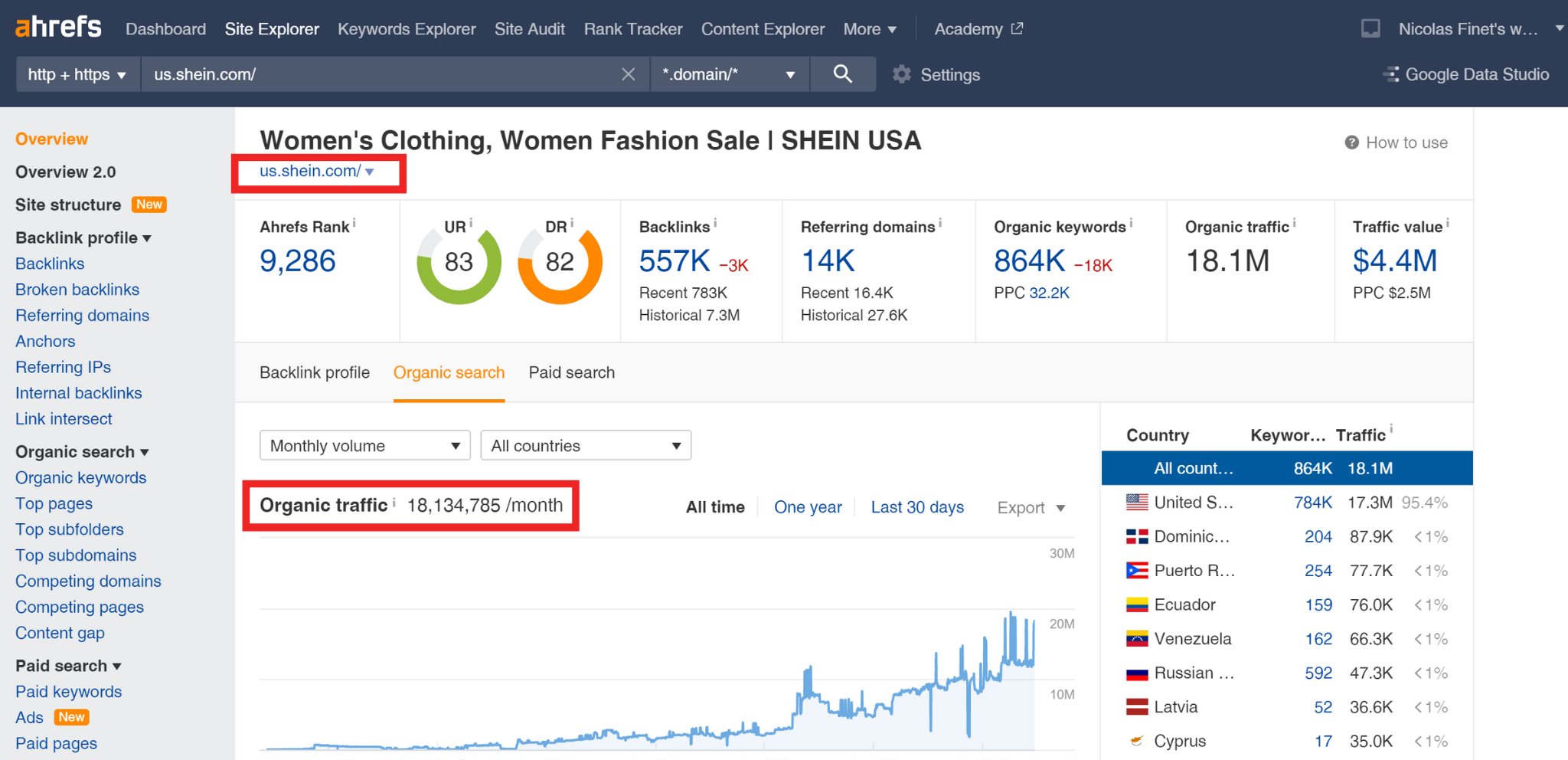
In addition, it should be noted that whether it is TikTok or Instagram, the available features of the platforms are not very different from each other. It’s up to you to choose the platform that best suits your brand and where your audience spends most of its time.
2. Decide The Location
Once you have chosen your platform, you need to choose the location from which you will broadcast your live stream event.
Certainly, you have several options when deciding on the location. You can do it from your company’s offices, but you can also choose a location that makes sense for your audience.
If you are a clothing brand, why not do it from a store? Or, if you are a fitness brand, why not do it from a gym? The idea is to find an attractive setting that makes sense in relation to:
- The products you offer.
- The audience you are addressing.
As long as the place can offer you a good connection and a good sound, the possibilities are endless. Be creative!
3. Select Your Presenter
The third step is to choose the person who will host your live events. Here you can either choose someone from your company or work with an influencer.
There are several things to keep in mind when selecting the best possible host.
First of all, the person must be comfortable in front of the camera. He or she must have an energetic attitude to keep an audience captivated for 60 minutes. It’s an intense job, requiring presentation skills.
Secondly, the person must be very knowledgeable about the products that will be presented. The host must be convinced of what he or she is presenting. Otherwise, it will show in the live video.
Additionally, if you choose to work with an influencer, make sure you choose one that your audience already knows and with whom you can collaborate in the long run.
In the podcast, we also explain that live shopping is not a one-shot event. If you decide to use it, you will need to plan several sessions, and therefore have a recurring host. Think about this factor when making your choice.
4. Choose Your Products
The fourth step is to choose the products you will put forward during your live commerce event. Note that Instagram allows you to sell up to 30 different products during a single session. However, in our opinion 30 is too many.
In the podcast, Smaranda advises offering 10, at most. Let’s say you talk about each product for 5 minutes, you’re already coming up with 50 minutes of live time, which is a lot.
Ideally, you want to choose products that are easy to talk about and that can be well illustrated in live video.
5. Define Your Budget
Last but not least, think about your budget when organizing your live shopping event. I asked this question during the podcast and the problem is that it is complicated to define a price range for organizing a live shopping event.
There are many factors that can influence the budget:
- Your technical equipment
- The budget requested by the influencer
- The promotion of the live event
Therefore, keep in mind that organizing a live shopping event costs money, but it is necessary to go through it to benefit from the advantages of this sales channel.
Mistakes To Avoid In Live Commerce
Finally, before closing our discussion, I asked Smaranda if there were any mistakes we should avoid when organizing a live commerce event. She shared with us the three most common mistakes:
- Not having a communications plan
- Not recycling your content
- Neglecting the technical aspects
Hence, we will discuss each of the items in the following paragraphs in more detail. It is important to keep these items in mind during the planning stage of your next live commerce event to avoid failing.
Mistake #1: Not Having A Communications Plan
The first mistake is not having a clear communications plan to promote your live event. Indeed, if you want to reach a minimum audience during your session, you will have to put effort into promoting it and creating a tease for the event.
In the podcast, Smaranda also recommends organizing the live shopping event well in advance. Similarly, you should allocate the right budget for promotion purposes and make sure that your audience hear about the event beforehand.
Mistake #2: Not Recycling Your Content
The second mistake is not recording your live stream and, therefore, not recycling it. Think about it: it’s a high-quality content that you can replay on many different channels:
- YouTube video
- Instagram posts
- Reels
- Stories
Take advantage of your live commerce events to create more video content, which you can rebroadcast on your different communication channels.
Mistake #3: Neglecting the technical aspects
Finally, the last mistake to avoid is neglecting the technical aspects. A well-organized live shopping event requires a lot of technical aspects behind it. These should not be taken for granted.
In China, it is not uncommon to see entire teams dedicated to the smooth running of a live shopping event:
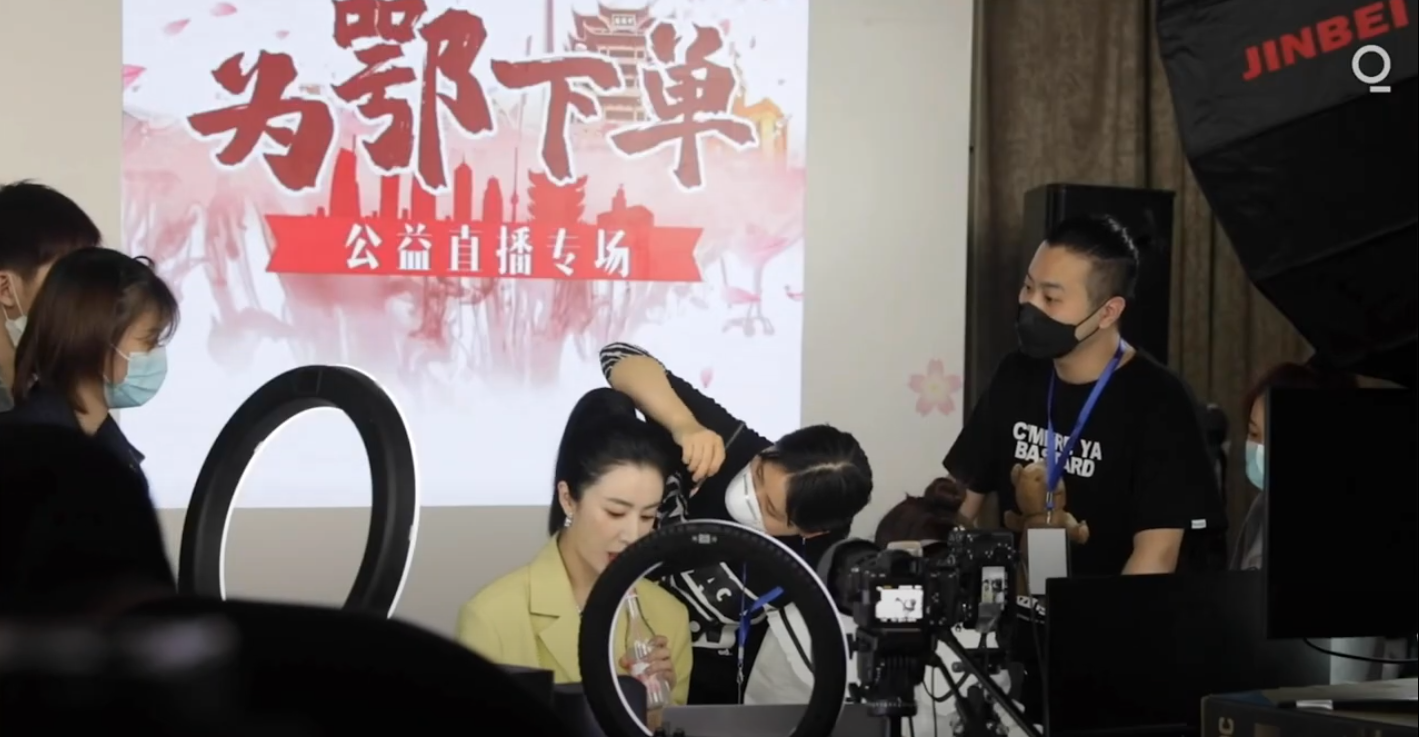
In this photo, you can see not only all the technical equipment used for a live shopping session but also the makeup artists present for the occasion.
Therefore, think about this aspect. What equipment will you need, and who will make sure that everything goes as planned during the live session?
To make sure that you have everything needed to launch a successful live commerce event, Hilarious can help you through every step of the process.
Next Steps
Here we are at the end of this article! In concrete terms, live commerce is when a brand decides to organize a livestream shopping event to sell products, on social media platforms, through live broadcast.
Do you feel ready to launch your first or next live commerce event? You can contact Hilarious directly to help you organize a live shopping session.






